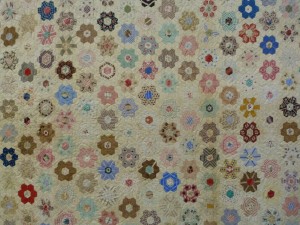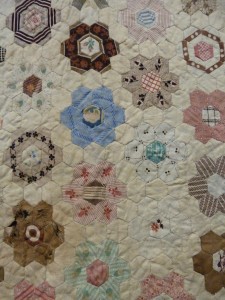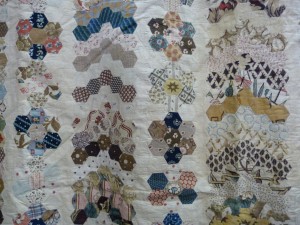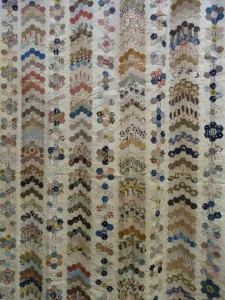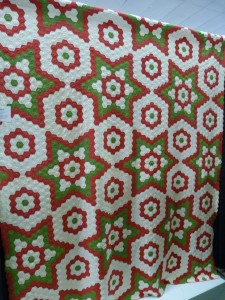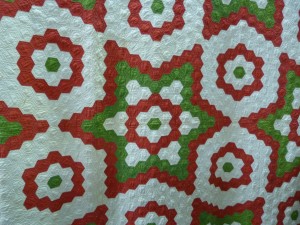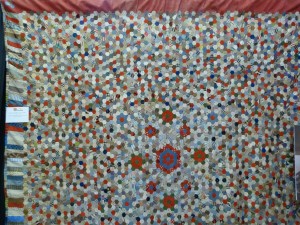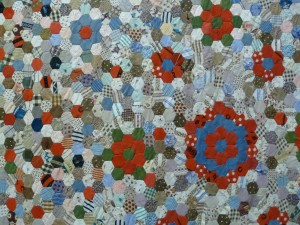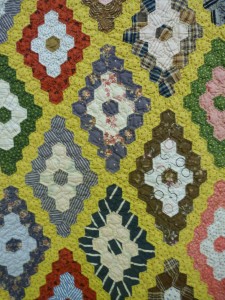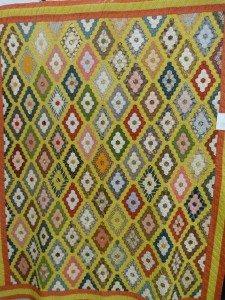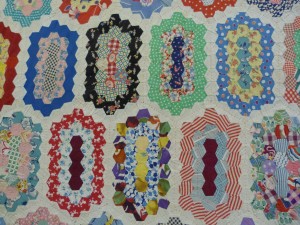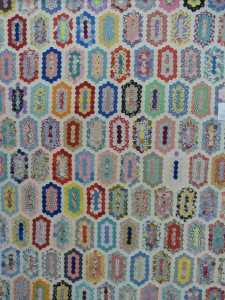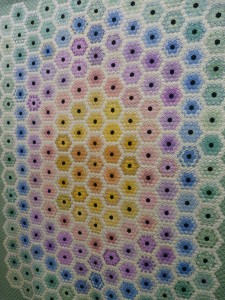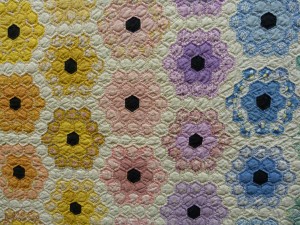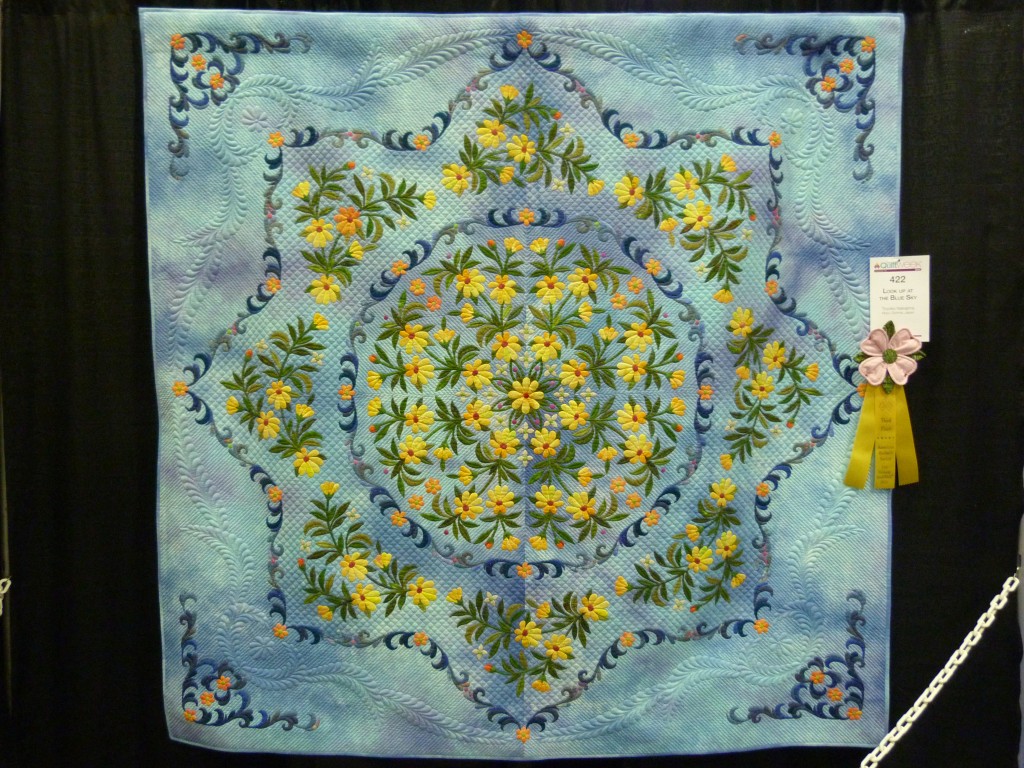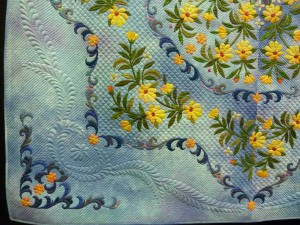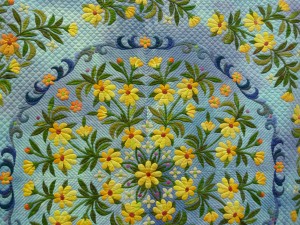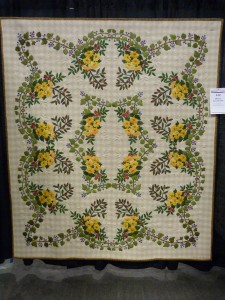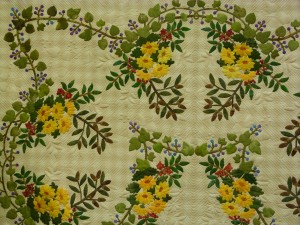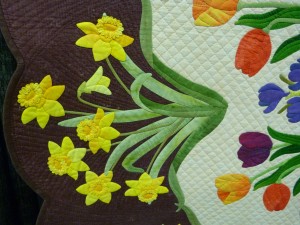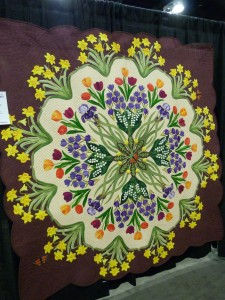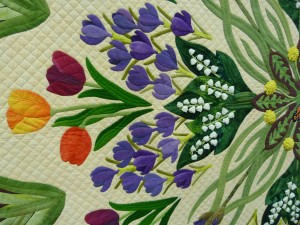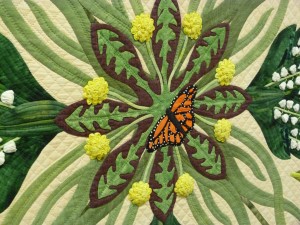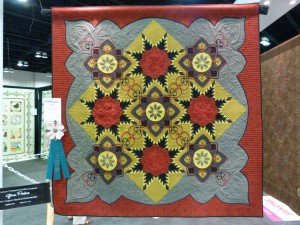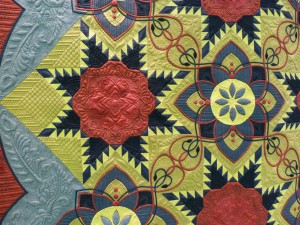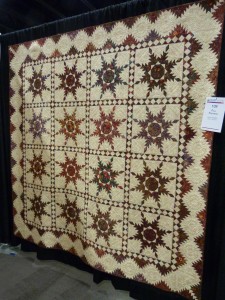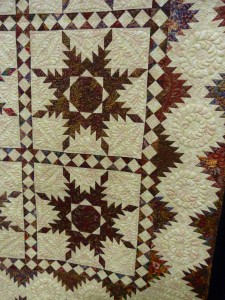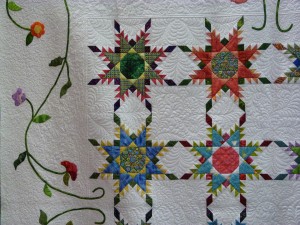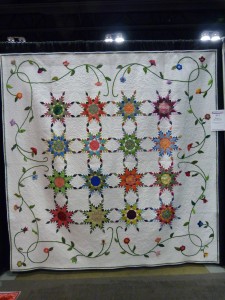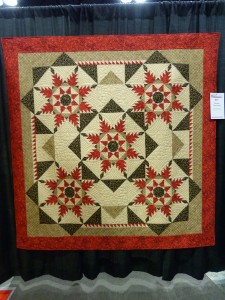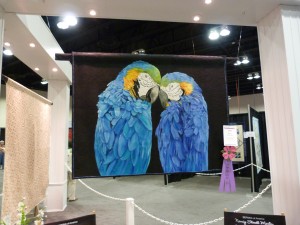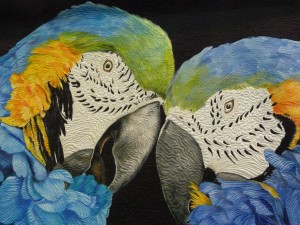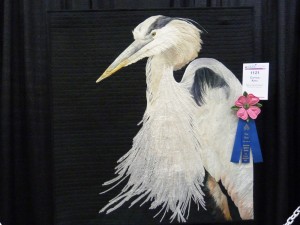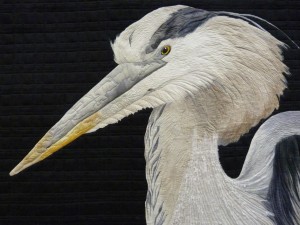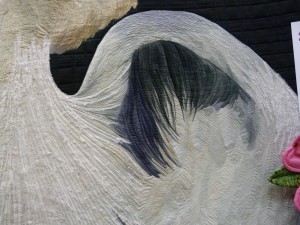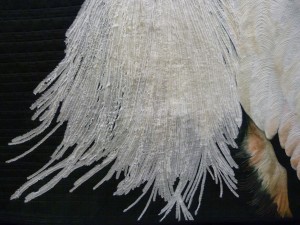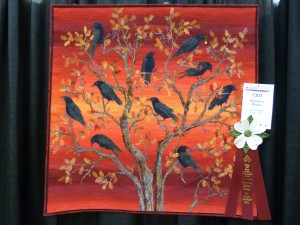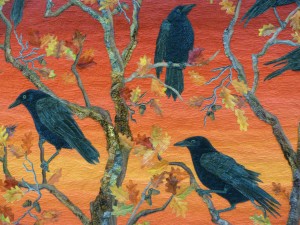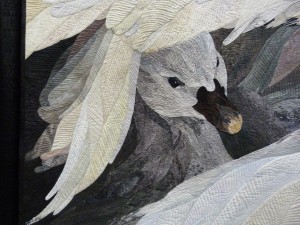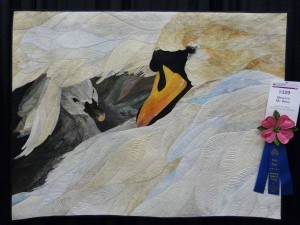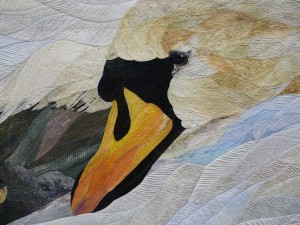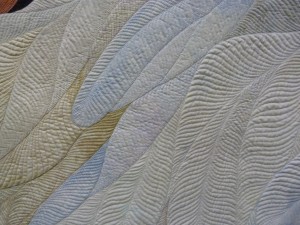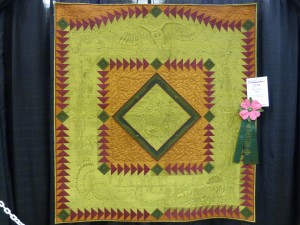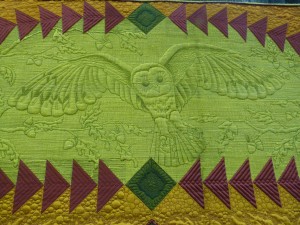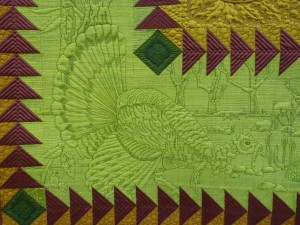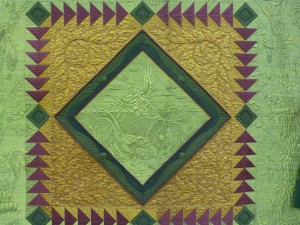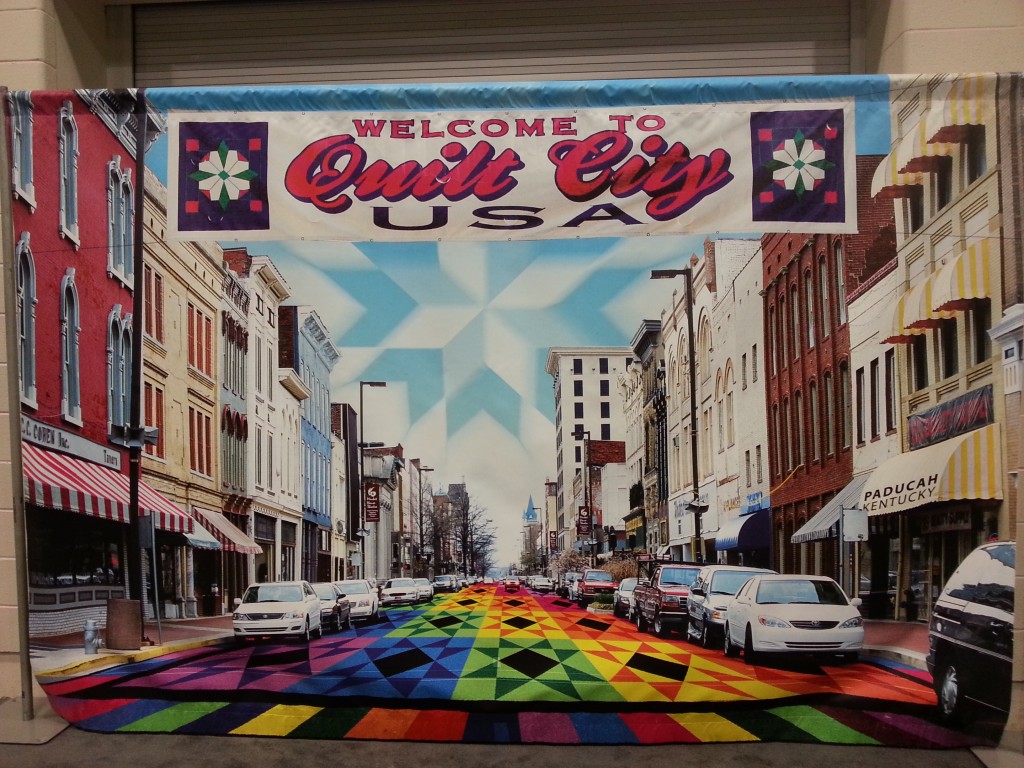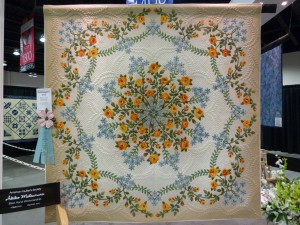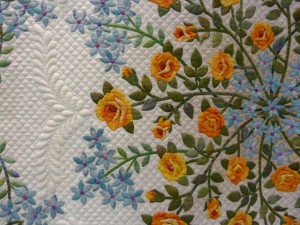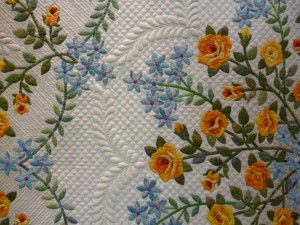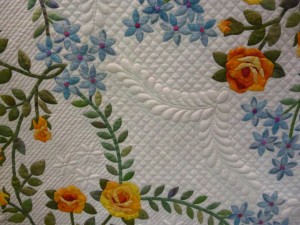Every year during QuiltWeek, the Paducah Rotary Club sponsors an exhibit of antique quilts at the Robert Cherry Civic Center. At this location, there were also several vendors and a selection of the 2014 Hoffman Challenge quilts. My focus is on the antique quilts. This year Mary Kerr curated an exhibit of 29 hexagon quilts spanning 160 years of history. The wonderful array of patterns all created from hexagons illustrated the amazing versatility of designing with this shape. Here are seven examples that particularly appealed to me.
This hexagon mosaic quilt, 55″ x 78″, originates from Connecticut, c.1820. The maker, who hand pieced the 5/8″ hexagons and hand quilted it is unknown. The quilt is from the collection of Sue Reich. As you can see from the detailed shot, many of the little 5/8″ hexagons were fussy cut.
The fabric in the next one is c.1830 and it was re-purposed into a bed hanging, 60″ x 68″, in the 1920’s. It comes from New Jersey and the maker is unknown. This is such an unusual setting with the chevron pattern created by the positioning of the light and dark fabrics and I love it. It is in the collection of Dana Balsalmo.
This green and red mosaic stars, 88″ x 99″, c. 1850, from Indiana is striking. The quilt maker is unknown. It was hand pieced with 1-3/4″ hexagons and hand quilted.
Here’s one that is really scrappy. It was made in Vermont, c. 1880, 88″ x 89″, and the quilt maker is unknown. It is hand pieced and simply backed with recycled cotton in the 1930’s. It has a piano keys border and no quilting.
This diamond mosaic setting, 82″ x 84″, c. 1860, is another quilt from the collection of Dana Balsalmo. It comes from Pennsylvania and the maker is unknown. It is hand pieced and hand quilted. The limy yellow really makes the diamonds pop.
This elongated pattern is an unusual hexagon setting. The quilt comes from North Carolina, c. 1940, 74″ x 85″, and again the quilt maker is unknown. It is hand and machine pieced from 1″ hexagons and quilted with red thread in the white hexagons in between the elongated clusters.
The last one, 70″ x 90″, has the traditional Grandmother’s Flower Garden rosettes with beautiful color gradation and is unusual in that the rosette centers are black. It was made c. 1930 by an unknown maker who used 1″ hexagons. The quilt is hand pieced and hand quilted. It was absolutely gorgeous.
